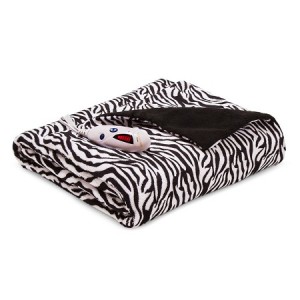
I come from a BIG family. One where love crosses the boundaries of religion. As a result, I celebrate both Christmas and Chanukah. When you consider that my birthday is the 24th, December is basically just one big party for us! (A party that’s a little more squeezed this year because Chanukah is coming a little later than usual!)
When people started asking what I might like this year, I realized that my answers were different. They were mostly things that I thought could make my life easier. So, if you are wondering what to get the zebra (or otherwise medically interesting person) in your life, or wondering what to ask for – here are a few of my ideas:
1. Comfy Clothes
People with EDS need clothes that are comfortable (both for going out and for the days when leaving the couch isn’t an option). My current favorite for both lounging and outings are LuLaRoe leggings! They come in just about every pattern (and solid color) you could ever wish for and are ridiculously soft! I am not a consultant, but I have a friend who is if you are new to LuLa and need one: LuLaRoe With Morgan Aldridge. Another idea is to buy fleece lined leggings to help keep your zebra warm!
2. A Heated Blanket

This one from Target.com is affordable AND has a zebra print! Be warm & spread awareness!
This time of year I have a really hard time keeping warm because of my autonomic dysfunction. Additionally warming up quickly when coming from outside helps people with joint conditions (like EDS & arthritis) to avoid additional pain brought on by the cold.
3. Compression Gloves
During the most wonderful time of the year, compression gloves serve many purposes for zebras – they encourage proper circulation (an issue for some of us who also have Raynaud’s), help keep our joints in line, increase proprioception, and provide an extra layer of warmth!
4. A Posture Shirt

Women’s Pullover Shirt from AlignMed
Poor posture can be a source of pain in EDSers (including me). Our brains do a bad job of telling our body where it is in space (proprioception), so we sometimes slump a little bit. Something like a posture shirt can provide the sensory input our brains need to remember to sit up straight. Posture shirts are especially good for the type of long road trips that tend to accompany the holidays as well! Or if you want to pretend to be a princess.
5. Subscriptions to Services
People with chronic illness/pain often have flares or difficult periods where it is hard for them to carry out day to day tasks. In these times, subscriptions for things like a cleaning service, snow removal/lawn service, or Uber can help make days that feel insurmountable easier for your loved one! Even on the good days, these things allow us to conserve our energy for the stuff that really matters. Bonus points if you find gift cards for a service like medical massage or acupuncture at a place that you know the person already uses.
6. Kinesio Tape

You know that colorful tape you see all over athletes these days?! We use it too! Kinesio tape can help to stabilize joints, reduce joint pain, improve posture, and protect muscles surrounding vulnerable joints from strain. It’s especially helpful for EDSers because our pain tends to move – and while we may not have a brace for our latest pain there are tons of YouTube videos providing instructions on how to properly tape just about any joint.
7. Subscriptions to Media
On the worst days, media subscriptions like HULU, Netflix, Amazon Prime, and Audible can be the thing that helps us forget our pain for a little while and make it through the day – episode by episode or chapter by chapter. It’s hard to put into words how important these types of subscriptions are for me on the bad days.
8. Migraine Glasses

Me wearing my Axon Optics Hannik migraine glasses
Many zebras have photophobia that is related to migraine, Chiari Malformation, or other neurological conditions that can coexist with EDS. I can not say enough how much these have helped me! It’s about to get snowy in the midwest and the sun shining off of the snow is a beautiful sight that I will be able to enjoy this year, instead of wincing from photophobia. There are other companies that make FL41 tinted glasses as well!
9. Compression Leggings

Compression Leggings from RejuvaHealth
Compression gear, which is vital for many people with dysautonomia (which is frequently seen in EDS) is not often fashionable – but compression leggings pull double duty! They are cute and functional.
10. A Fitness Tracker With a Heart Rate Monitor

I like my Fitbit Charge 2, but there are definitely other options on the market. This helps me to know when I need to slow down because I don’t always feel tachycardia (fast heart rate) coming on.
I hope that this list provides some ideas for the zebra in your life. Feel free to share any ideas you think of that I missed in the comments! All of that said, some of the most important things that you can give a zebra can’t be wrapped. Your love, and understanding are more than enough! I wish you all a holiday season filled with love and laughter.
**This is not a sponsored post – just trying to help out zebras and their families!











